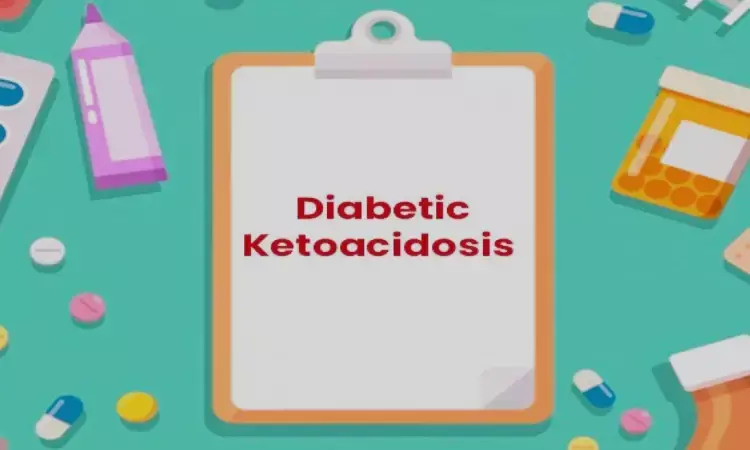- Home
- Medical news & Guidelines
- Anesthesiology
- Cardiology and CTVS
- Critical Care
- Dentistry
- Dermatology
- Diabetes and Endocrinology
- ENT
- Gastroenterology
- Medicine
- Nephrology
- Neurology
- Obstretics-Gynaecology
- Oncology
- Ophthalmology
- Orthopaedics
- Pediatrics-Neonatology
- Psychiatry
- Pulmonology
- Radiology
- Surgery
- Urology
- Laboratory Medicine
- Diet
- Nursing
- Paramedical
- Physiotherapy
- Health news
- Fact Check
- Bone Health Fact Check
- Brain Health Fact Check
- Cancer Related Fact Check
- Child Care Fact Check
- Dental and oral health fact check
- Diabetes and metabolic health fact check
- Diet and Nutrition Fact Check
- Eye and ENT Care Fact Check
- Fitness fact check
- Gut health fact check
- Heart health fact check
- Kidney health fact check
- Medical education fact check
- Men's health fact check
- Respiratory fact check
- Skin and hair care fact check
- Vaccine and Immunization fact check
- Women's health fact check
- AYUSH
- State News
- Andaman and Nicobar Islands
- Andhra Pradesh
- Arunachal Pradesh
- Assam
- Bihar
- Chandigarh
- Chattisgarh
- Dadra and Nagar Haveli
- Daman and Diu
- Delhi
- Goa
- Gujarat
- Haryana
- Himachal Pradesh
- Jammu & Kashmir
- Jharkhand
- Karnataka
- Kerala
- Ladakh
- Lakshadweep
- Madhya Pradesh
- Maharashtra
- Manipur
- Meghalaya
- Mizoram
- Nagaland
- Odisha
- Puducherry
- Punjab
- Rajasthan
- Sikkim
- Tamil Nadu
- Telangana
- Tripura
- Uttar Pradesh
- Uttrakhand
- West Bengal
- Medical Education
- Industry
Disparities in Diabetic Ketoacidosis Outcomes revealed on basis of Diabetes Type in new study

USA: A recent five-year national retrospective cohort study has shed light on significant disparities in outcomes and healthcare utilization for diabetic ketoacidosis (DKA) among patients with type 1 and type 2 diabetes mellitus. The findings underscore the need for tailored management approaches and targeted interventions to address these disparities effectively.
The study revealed a higher mortality rate for patients with type 2 diabetes (T2D) hospitalized for ketoacidosis versus those with type 1 diabetes (T1D).
The mortality rate for those with T2D and diabetic ketoacidosis came in at 0.85% versus 0.2% for those with T1D and DKA, Shellsea Portillo Canales, MD, of St. Louis University Hospital reported.
The findings, presented at the American Association of Clinical Endocrinology, suggest the need for targeted healthcare strategies to address these disparities and improve patient outcomes, stressing the importance of personalized care approaches tailored to the specific needs of patients with different diabetes types.
Diabetic ketoacidosis is a serious and potentially life-threatening complication of diabetes, characterized by high blood sugar levels, ketone accumulation, and acidosis. While it is more commonly associated with type 1 diabetes, cases among individuals with type 2 diabetes have been increasingly reported in recent years.
The research team aimed to compare the impact of diabetes types on length of stay (LOS), mortality, and hospital charges.
For this purpose, they conducted a retrospective cohort study utilizing the 2016-2020 National Inpatient Sample (NIS) HCUP Database with adult patients admitted to acute care. Patients were divided into two cohorts, those with type 1 vs type 2 DM.
The primary endpoint was mortality obtained with multiple logistic regression analysis. Secondary endpoints included total hospital charges, and LOS assessed with multiple linear regression analysis. Missing data was accounted for with multiple imputation analyses. Multiplicity was addressed using statistical significance adjusted with Bonferroni-corrected alpha value.
The researchers reported the following findings:
- There were significant differences in mortality, with T2DM patients having a higher mortality rate (0.85%) than T1DM patients (0.2%).
- T2DM patients also experienced longer LOS (average: 3.81 days vs. 2.97 days for T1DM) and incurred higher hospital charges (average: $40,433 versus $29,873 for T1DM).
- Significant disparities were observed in the median household income, insurance type, hospital region, bed size, for-profit status, and teaching hospital status.
- Additional conditions such as Afib, CHF, CAD, HTN, obesity, hyperlipidemia, CVA, COPD, ESRD, cirrhosis, MI, vascular complications, AKI requiring HD, and the need for mechanical ventilation showed varying prevalence between the groups, with T2DM patients generally having higher rates of these conditions.
As efforts to combat diabetes and its complications continue, studies like this play a crucial role in informing evidence-based interventions and policies aimed at reducing disparities and improving outcomes for all individuals affected by this chronic condition.
Reference:
Portillo Canales S, et al "Disparities in outcomes and healthcare utilization for diabetic ketoacidosis among patients with type 1 and type 2 diabetes mellitus: A five-year national retrospective cohort study" AACE 2024.
Dr Kamal Kant Kohli-MBBS, DTCD- a chest specialist with more than 30 years of practice and a flair for writing clinical articles, Dr Kamal Kant Kohli joined Medical Dialogues as a Chief Editor of Medical News. Besides writing articles, as an editor, he proofreads and verifies all the medical content published on Medical Dialogues including those coming from journals, studies,medical conferences,guidelines etc. Email: drkohli@medicaldialogues.in. Contact no. 011-43720751


